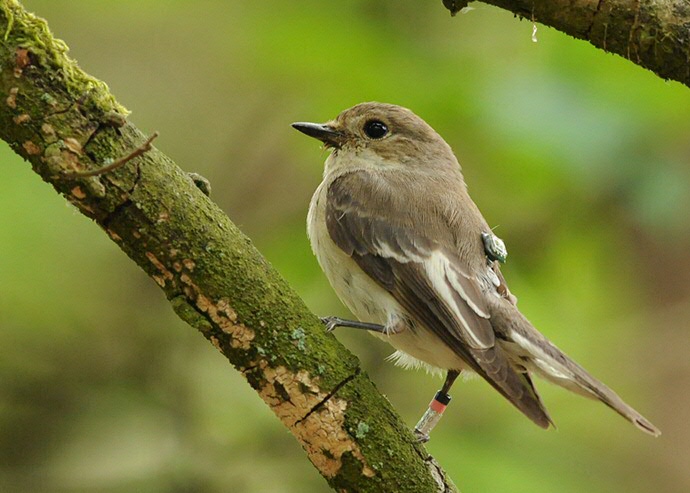Alternate non-stop migration strategies of pied flycatchers to cross the Sahara desert

Each year more than two billion songbirds cross the Sahara, but how they perform this formidable task is largely unknown. Using geolocation tracks from 27 pied flycatchers, a nocturnally migrating passerine, Janne Ouwehand and Christiaan Both show that most birds made diurnal flights in both autumn and spring. These diurnal flights were estimated to be part of non-stop flights of mostly 40–60 h. In spring, birds flew across the Sahara, while autumn migration probably circumpassed part of the desert, through a long oversea flight. Their data contradict claims that passerines cross the Sahara by intermittent flight and daytime resting. The frequent occurrence of long non-stop flights to cross the desert shows migrants' physiological abilities and poses the question why this would not be the general migration strategy to cross the Sahara.
More information
- Full publication in Biology Letters
- Contact: PhD Janne Ouwehand, Conservation Ecology Group, or: prof. Christiaan Both, Conservation Ecology Group
| Last modified: | 13 October 2022 08.55 a.m. |
More news
-
13 May 2024
‘The colourful cells of petals never get boring!’
Most people will enjoy colours in nature. However, the interest of evolutionary biologist Casper van der Kooi goes much further: he studies how flowers, birds, butterflies, and beetles get their colours. He also studies how these colours are used...
-
13 May 2024
Trapping molecules
In his laboratory, physicist Steven Hoekstra is building an experimental set-up made of two parts: one that produces barium fluoride molecules, and a second part that traps the molecules and brings them to an almost complete standstill so they can...
-
07 May 2024
Lecture with soon to be Honorary Doctor Gerrit Hiemstra on May 24
In celebration of his honorary doctorate, FSE has invited Hiemstra to give a lecture entitled ‘Science, let's talk about it’ on the morning of 24 May
